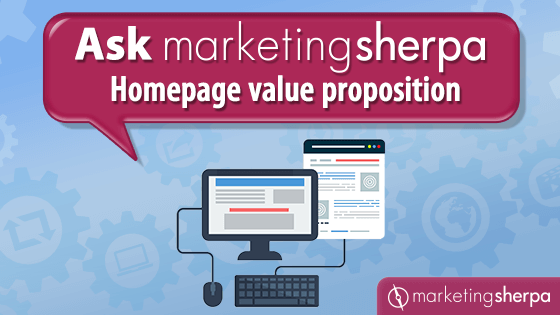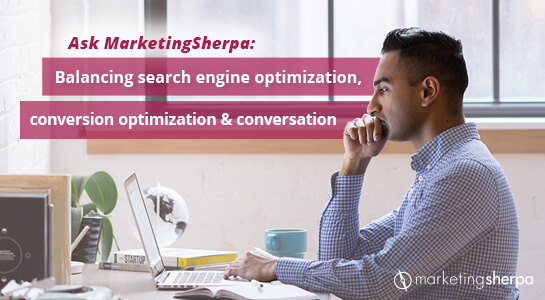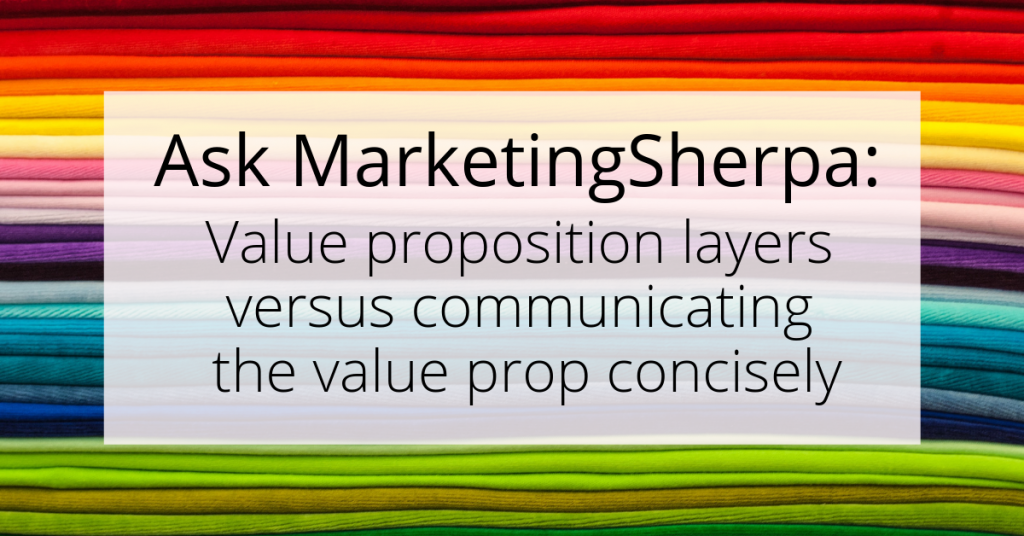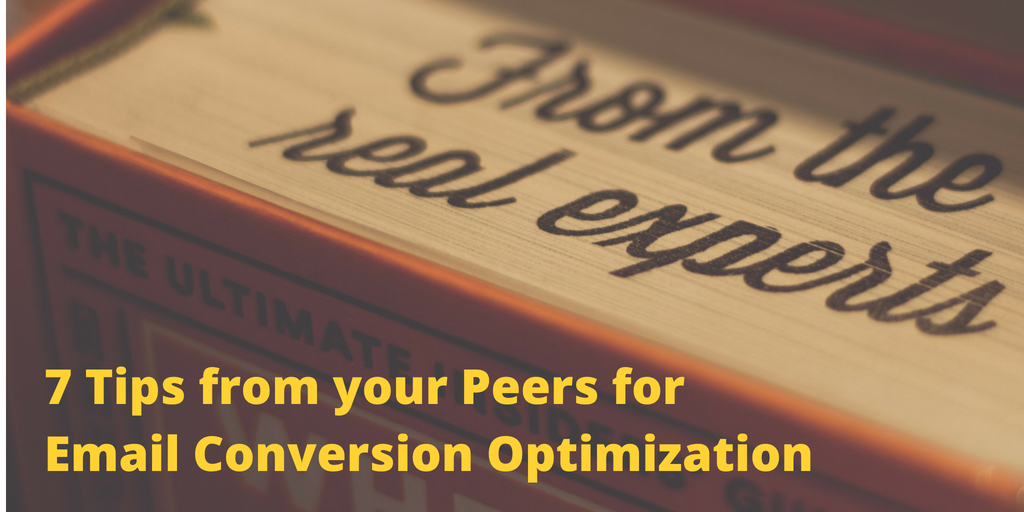
We frequently receive questions from our email newsletter subscribers asking marketing advice. Instead of hiding those answers in a one-to-one communication, we occasionally publish edited excerpts of some of these conversations here on the MarketingSherpa blog so they can help other readers as well. If you have any questions, let us know.
Dear MarketingSherpa: Hi Daniel. Hope you’re having a good week.
About 10 days ago I commented about a three-part study you posted on homepage redesigns on your Linkedin post.
I asked you for some extra resources, and you sent a few links that I reviewed.
If you don’t mind me asking a direct question, could you offer your two cents of feedback on this please?
Here’s the thing. My client is a SaaS Case Management platform, that wants a redesigned website. So we’ve started working, and at the outset, the deal is to make the homepage less techy and more business-oriented.
I’m working on the homepage value prop, and we discussed two options, both suggested by me:
Option 1: Manage Cases With Ease
Option 2: Manage More Cases With Less Stress.
The internal team is heavily leaning to Option 1 because it looks cleaner, and I’m pulling the other way because Option 2 identifies the wants and pains of the target audience better, and with more emotional impact.
I’d love to hear your two cents on the matter. When the homepage is competing with $50 million per year businesses, and the audience is the public sector and companies serving the public sector, how smart is the idea to use these more “emotions-oriented” taglines?
Igor Mateski
Founder/CEO
WebMaxFormance
Dear Reader: Hey Igor,
I can’t say which is the best value prop for the company. That takes a lot of work. If you haven’t already, I suggest conducting a value prop workshop with them. Here’s an example – B2B Value Proposition: How a tech startup used a value prop workshop to help prepare for a public offering (4 takeaways for your brand)
As to your question between the two options, your best bet is to test.
Personally, my off-the-cuff response (hope it doesn’t sound too harsh), they will both underperform because they have no credibility. I know you wouldn’t tell me “Manage Less Cases with More Stress” so why should I believe you if you told me “Manage More Cases with Less Stress?”
As for “emotions-oriented” – it can work. Remember, you’re not selling to companies or government agencies, you’re selling to people. If you’ve hit on the right emotion from them (and I don’t know them and can’t say if you have) it can be very effective, but again, it needs to be credible.
Hope that helps.
Dear MarketingSherpa: Hmm…interesting point, about credibility. I didn’t turn over that rock. Obviously.
We haven’t had any interviews/planning with the client. They just asked that we redesign the site, and the deadline is New Year’s. So we’re cutting corners in plenty of places in order to make the deadline.
That being said, what do you suggest as a quick and easy way to add credibility to the value prop?
By the way, thank you for your comment. It’s quite helpful!
Dear Reader: Glad I could help, Igor. Quick and easy? That’s tough. I’d suggest get them on the phone, discuss the claim they like, and then you really have to challenge them. “OK, I believe you. But why should anyone else believe this? They’ll have three other tabs open with websites for your competitors. Why would they believe this line?”
Here are some specific elements that can help build credibility on the page – Credibility: 9 elements that help make your marketing claims more believable.
Dear MarketingSherpa: Thank you for the resources. I really appreciate this.
If there’s anything I can do for you, let me know.
You can follow Daniel Burstein, Senior Director, Content & Marketing, MarketingSherpa and MECLABS Institute, on Twitter @DanielBurstein.
You might also like…
MECLABS Institute Value Proposition Development on-demand certification course – Learn how to clearly communicate an effective value proposition based on a review of 1,100 academic articles and more than two decades of real-world experimentation
MarketingSherpa Quick Guide to Website Optimization PDF
Powerful Value Propositions: How to Optimize this Critical Marketing Element – and Lift Your Results (Value Proposition Archives)













